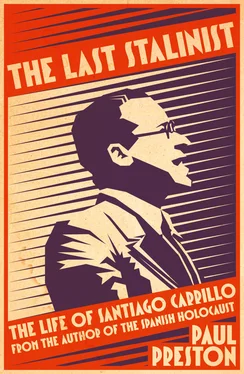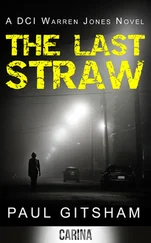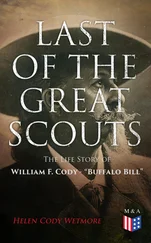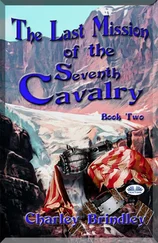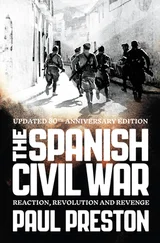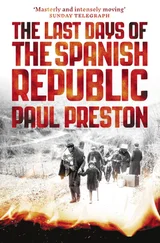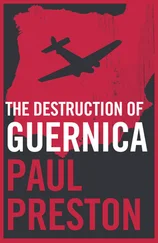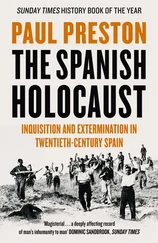Carrillo’s election was probably the result of two things – the fact that he was able to reflect the frustrations of many rank-and-file members and, of course, the known fact of his father’s links to Largo Caballero. Not long afterwards, he became editor of the FJS weekly newspaper, Renovación , which had considerable autonomy from the executive committee. From its pages he promoted an ever more radical line with a number of like-minded collaborators. The most senior were Carlos Hernández Zancajo, one of the leaders of the transport union, and Amaro del Rosal, president of the bankworkers’ union. Among the young ones was a group – Manuel Tagüeña, José Cazorla Maure, José Laín Entralgo, Segundo Serrano Poncela (his closest comrade at this time) and Federico Melchor (later a lifelong friend and collaborator) – all of whom would attain prominence in the Communist Party during the Civil War. Greatly influenced by their superficial and rather romantic understanding of the Russian revolution, they argued strongly for the PSOE to take more power. Their principal targets were Besteiro and his followers, who still advocated that the Socialists abstain from government and leave the bourgeoisie to make its democratic revolution. 42
Carrillo’s intensifying, and at this stage foolhardy, radicalism saw him risk his life during General Sanjurjo’s attempted military coup of 10 August 1932. When the news reached Madrid that there was a rising in Seville, Carrillo – according to his memoirs – abandoned his position as the chronicler of the Cortes debates and joined a busload of Republican officers who had decided to go and combat the rebels. In this account of this youthful recklessness, he says that he left his duties spontaneously without seeking permission from the editor. However, El Socialista published a more plausible and less heroic version at the time. The paper reported that he had been sent to Seville as its correspondent and had actually gone there on the train carrying troops sent officially to repress the rising. Whatever the truth of his mission and its method of transport, by the time he reached Seville Sanjurjo and his fellow conspirators had already given up and fled to Portugal. The fact that Carrillo stayed on in Seville collecting material for four articles on the rising that were published in El Socialista suggests that he was there with his editor’s blessing. 43
A close reading of the lucid prose that characterized the articles suggests that the visit to Seville was an important turning point in the process of his radicalization. In the first, he recounted the involvement of an alarming number of the officers in the Seville garrison. In the second, he described the indecision, not to say collusion, of the Republican Civil Governor, Eduardo Valera Valverde. He went on to comment on the role of the local aristocracy in the failed coup. In the third, after some sarcastic comments on the inactivity of the police, he praised the workers of the city. As far as he was concerned, the coup had been defeated because the Communist and anarchist workers who dominated the labour movement in the city had unanimously joined in the general strike called by the minority UGT. In the fourth, he reiterated his conviction that it was the workers who had saved the day, whether they were the strikers in the provincial capital or the landless labourers from surrounding villages who had readied themselves to intercept any column of rebel troops that Sanjurjo might have sent against Madrid. 44
The entire experience consolidated Carrillo’s growing conviction that the gradualism of the Republic, particularly as personified by its ineffectual provincial governors, could never overcome the entrenched social and economic power of the right. His belief that what was needed was an outright social revolution was shared by an increasing number of his comrades in the Socialist Youth but not by its executive committee. Around this time, he undertook a propaganda tour of the provinces of Albacete and Alicante. He later believed that the itinerary chosen for him by the Besteirista executive was a dirty trick designed to cause him considerable discomfort. While some of the villages selected were Socialist-dominated, most were controlled by the CNT. In Elda and Novelda, heavily armed anarchists prevented his meetings going ahead. In Alcoy, he started but the meeting was disrupted and he had to flee by hitchhiking to Alicante. Such experiences were part of the toughening up of a militant. 45
Yet another stage in the process took place when he was imprisoned after falling foul of the Law for the Defence of the Republic. Ironically, his mentor Largo Caballero had enthusiastically supported the introduction of the law on 22 October 1931 because he perceived it as directed against the CNT. Its application saw Carrillo and Serrano Poncela arrested in January 1933, and then tried for subversion because of inflammatory articles published in Renovación during the state of emergency that had been decreed in response to an anarchist insurrection. This was the uprising in the course of which there took place the notorious massacre of Casas Viejas in Cádiz. While Carrillo and Serrano Poncela were in the Cárcel Modelo in Madrid, anarchist prisoners were brought in. They aggressively rebuffed the attempts at communication made by the two young Socialists. Carrillo later regarded that first short stay in prison as a kind of baptism for a nascent revolutionary. 46
Carrillo might have been in the vanguard of radicalism, but he was not alone. Given that the purpose of his reforms had been humanitarian rather than revolutionary, Largo Caballero was profoundly embittered by the ferocity and efficacy of right-wing obstacles to the implementation of his measures. The hatred of capitalism so powerful in his youth was reignited. Largo Caballero’s closest theoretical adviser was Luis Araquistáin, who, as his under-secretary at the Ministry of Labour, had shared his frustration at rightist obstruction. Greatly influenced by Araquistáin, Largo Caballero began to doubt the efficacy of democratic reformism in a period in which economic depression rendered capitalism inflexible. It was inevitably those Socialist leaders who were nearest to the problems of the workers – Largo Caballero himself, Carlos de Baraibar, his Director General of Labour, and Araquistáin – who were eventually to reject reformism as worse than useless. Writing in 1935, Araquistáin commented on the Socialist error of thinking that, just because a law was entered on the statute book, it would be obeyed. He recalled, ‘I used to see Largo Caballero in the Ministry of Labour feverishly working day and night in the preparation of far-reaching social laws to dismantle the traditional clientalist networks [ caciquismo ].’ It was useless. While the Minister drafted these new laws, Araquistáin had to deal with ‘delegations of workers who came from the rural areas of Castille, Andalusia, Extremadura to report that existing laws were being flouted, that the bosses [ caciques ] still ruled and the authorities did nothing to stop them.’ The consequent fury and frustration inevitably fed into a belief that the Socialists needed more power. 47
By the autumn of 1932, verbally at least, Largo Caballero was apparently catching up with the radicalism of his young disciple. The scale of his rhetorical radicalization was revealed by his struggle against the moderate wing of the Socialist movement led by Julián Besteiro. At the Thirteenth Congress of the PSOE, which opened on 6 October, Besteiro’s abstentionist positions were defeated by the combined efforts of Prieto and Largo Caballero, and Largo Caballero was elected party president. 48In fact, the Thirteenth PSOE Congress represented the last major Socialist vote of confidence in the efficacy of governmental collaboration. It closed on 13 October. The following day, the Seventeenth Congress of the UGT began. It would be dominated by the block votes of those unions whose bureaucracy was in the hands of Besteiro’s followers, the printers (Andrés Saborit), the railway workers (Trifón Gómez) and the landworkers’ Federación Nacional de Trabajadores de la Tierra (Lucio Martínez Gil). Accordingly, and despite the growing militancy of the rank and file of those unions, the Seventeenth Congress elected an executive committee with Besteiro as president, and all his senior followers in key positions. Largo Caballero was in fact elected secretary general, but he immediately sent a letter of resignation on the grounds that the congress’s vindication of the role of Besteiro and Muiño in the December 1930 strike constituted a criticism of his own stance. He was convinced that the mood of the rank and file demanded a more determined policy. 49
Читать дальше
